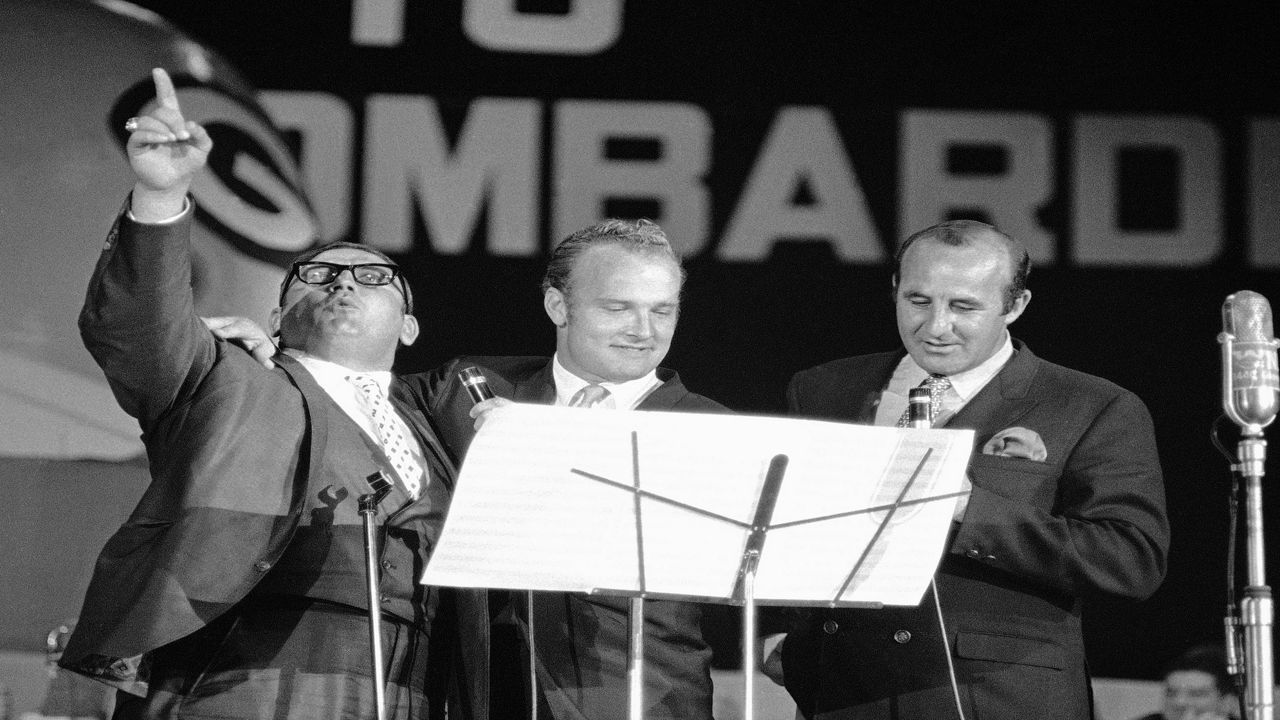APPLETON, Wis. – So a banker, a construction worker, and a hairdresser walk into a bar and for the next few hours share cocktails, stories, and laughs – and shake a little dice, for sure – with a bunch of guys who were members of one of the greatest NFL teams ever.
No joke.
If you were lucky enough to be alive in the 1960s and living in the Appleton area, it was not uncommon to see Mr. or Mrs. John Q. Public kibitzing at a local restaurant bar with the likes of Max McGee, Paul Hornung or Fuzzy Thurston, Packers Super Bowl champions all.
“I’ll tell you, I’ve always been very happy that I had the chance in my life to be there at that particular time,’’ said Bob Dries, a former bartender at The Left Guard in Appleton, “and to meet all those people.”
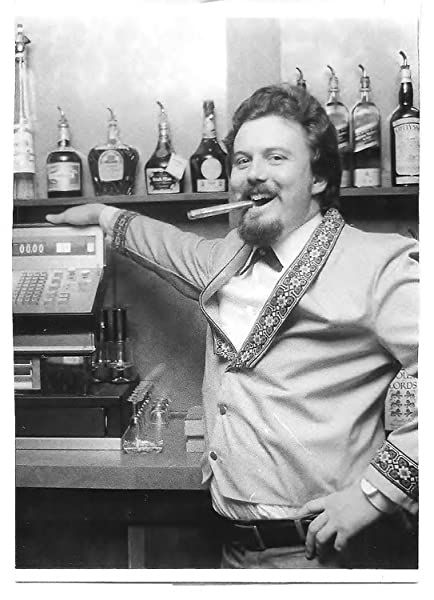
Mark Peddecord, 79, was part of that life, too – a local businessman who was Max McGee’s neighbor in an eight-unit apartment complex in Neenah for 7 and 1/2 years.
“Max McGee was one of my best friends and he was a business partner along with Bob Long, Fuzzy Thurston, and the Pizza Huts,’’ said Mark. “It was quite a run.”
It was the Golden Age to be a sports fan in Wisconsin, an era the likes of which was never seen before and never will be seen again.
****
Bill Martine was minding his own business, making plans to remodel a building in Menasha he planned to call Martine’s Steakhouse, when his buddy Mal Kennedy -- who served as the NFL Players Association Executive Director from 1969-71 – stopped by with Fuzzy Thurston.
“Fuzzy thought it would be a good idea if he could become a partner,’’ said Martine of his planned restaurant.
Mind you, the average NFL salary in the 1960s was in the neighborhood of $25,000 a year, so finding additional ways to make money was simply a way of life for many players, and Bill agreed to bring Fuzzy on.
“We talked about what we were going to call it, Martine’s or Thurston’s,’’ said Bill. “My brother happened to be around and said, ‘No, Bill, you’re the steak man.’ I said, ‘I know that, but Fuzzy Thurston’s name up there is going to bring people in.’”
A couple of days later, they met at Jake Skall’s Colonial Wonder Bar and Dining Room in Appleton.
“(Paul) Hornung happened to be in town and he came and sat in with us,’’ said Bill. “We figured out we’d call it The Left Guard, but we didn’t have a damn penny to remodel.”
The owner of the building agreed to lend them $5,000, the remodeling was completed and the doors opened.
“Bob Skoronski (the offensive left tackle with the Packers) worked for Riverside Paper and brought four, five guys in, and from that point, you couldn’t get in the front door,’’ said Bill. “We were packed for a good couple of years.”
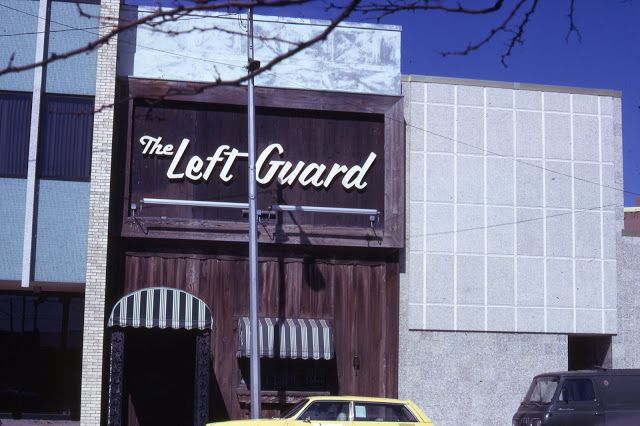
The success led to the opening of more Left Guard restaurants in Appleton, Madison, and Minneapolis, and a Left End restaurant in Manitowoc after McGee came on as a partner. At their peak, they owned and operated 11 restaurants.
And it was a favorite spot for Packers players to just come and hang out, particularly on Monday nights and Sundays after games.
“I always remember the players, Monday night was their night off, and they liked coming to Appleton,’’ said Bob. “It got them out of Green Bay and (Packers coach Vince) Lombardi didn’t quite have the eye in the sky on them in Appleton. Players were always really gracious and really nice. Of course Max, he was always kind of the ladies’ man and Fuzzy was kind of the cut-up. At the time, it was popular to play bar dice. They have a game going and then Fuzzy would say, ‘OK, this pot’s for the bartender.’ Then, they’d push that across as a tip.’’
It would not be uncommon for Max to get up on stage with the solo guitarist, who served as the entertainment, and sing a song or two. An expansion project allowed the business to have live entertainment six nights a week. It became the place to be in Appleton.
“It was very popular with everyone, primarily the young ladies, of course, and that brought in a lot of young guys,’’ said Bob. “There always was a good crowd; a good time going on there.”
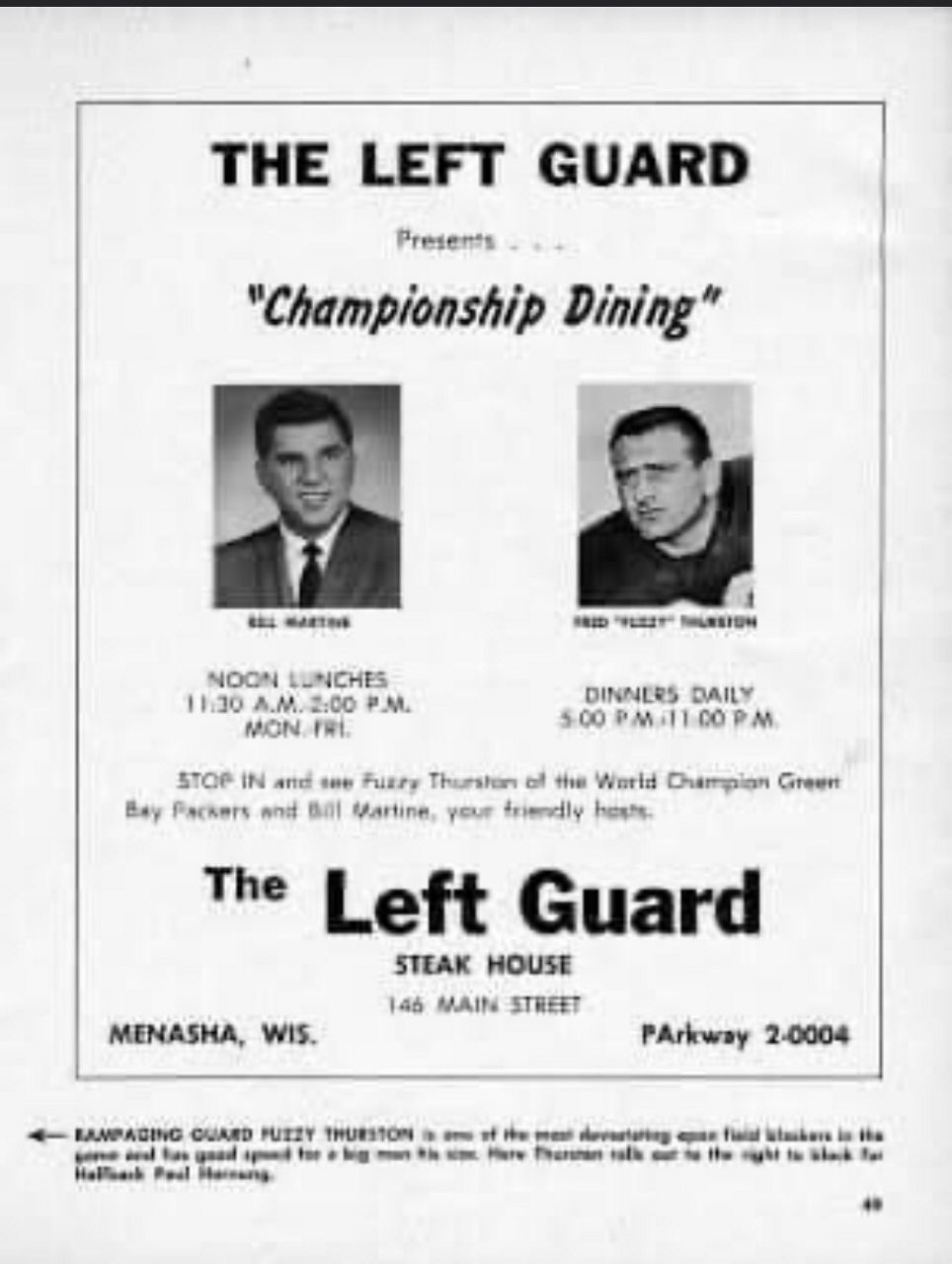
And as often was the case, the 1 a.m. bar time proved too early to shut the party down.
“It was after the motel was added on, they decided to continue the party and Fuzzy came and got some of us, and we rolled the jukebox out of the bar and down into the pool area in the motel,’’ said Bob. “Fuzzy got a couple of rolls of quarters out of the change box, and we rolled the portable bar down there, and we just kept right on going. That was quite a night.”
Bob said on Sunday nights, particularly after home wins, everyone would be in an especially good mood. But that wasn’t necessarily the case the day after the legendary Ice Bowl win.
“I remember six to eight players came in and they were kind of subdued; I think they were really just exhausted,’’ said Bob. “But we knew it was an auspicious event because Bart Starr came in with them and he actually had a drink, an alcoholic beverage. And I remember somebody asking the cocktail waitress, ‘Well, what did he order?’ She said, ‘A brandy and 7UP.’ He left shortly after, but that was a pretty rare occasion when you’d see Bart out in a bar.
“The thing that always impressed me was how well-mannered everybody was, and how much fun people just had. Jerry Kramer would stop around occasionally. Dave Robinson was always very nice, very gracious. It was good times.”
****
Bill Martine, once again, was minding his own business when former Packers great and NFL Hall of Famer Tony Canedeo approached him at Butte des Morts Country Club in Appleton.
“I was at the bar and Tony said, ‘You know, Bill, what about the idea that anybody who rushed for 1,000 yards, we could honor all those guys with a banquet?’’ said Bill.
And the 1,000-Yard Club Banquet was born.
Martine, Mal Kennedy and others helped convince 119 local businessmen to contribute $100 each and the first banquet was held on June 9, 1964, beginning a period of time where the Fox Cities, at least for one weekend, became the center of the NFL universe.
Over the years – name-dropping alert – Franco Harris, Jim Brown, Gale Sayers, O.J. Simpson, LeRoy Kelly, Larry Csonka, Calvin Hill, Pete Rozelle, Don Shula, Al Davis, George Allen, Howard Cosell, Keith Jackson, Don Meredith, Weeb Ewbank, Vince Lombardi, Bart Starr and many others all made their way to the Fox Cities for the banquet, which raised money for various youth sports programs in the area.
“It was very, very laid back and the only exposure to Wisconsin they would have had was in Green Bay and County Stadium in Milwaukee,’’ said Mark Peddecord, who served as the banquet president for two years. “It was just different times. They enjoyed coming here. There was no large pressure. We just basically said to them: It’s a party.”
The banquet was held at various locations in the Fox Cities over the years to accommodate its growing popularity, once even being held in an airplane hangar at what is now Appleton International Airport.
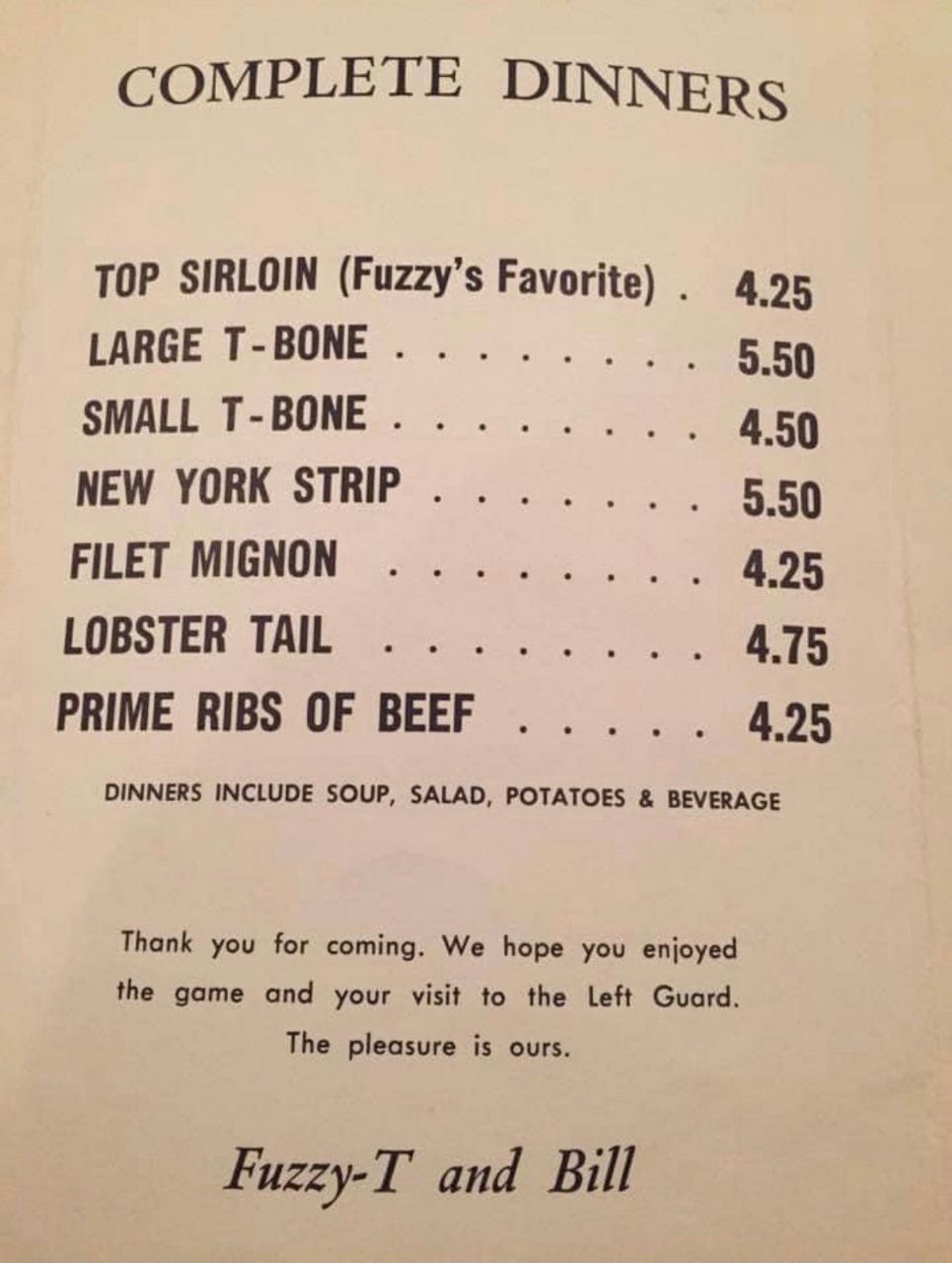
Over time the banquet began to honor offensive linemen as well, as a way to entice the 1,000-yard rushers to come.
“O.J. Simpson, he finally came,’’ said Mark of the NFL’s first player to run for 2,000 yards in a season, which at that time was 14 games. “I don’t want ‘bribe’ to be the right word, but we coerced him. With O.J., we had to give (the lineman award) to the whole offensive line; now that’s a big budget for us to fly all those guys in here.
“But they came. And O.J. comes, and he wants a car to go visit somebody in Milwaukee. Unfortunately, they talked me into giving him my Lincoln Town Car. So O.J. takes that to Milwaukee, and I tell him, ‘O.J., you have to be back here tomorrow at 4 p.m.’ He says, ‘Oh yeah, Mark, I’ll be there. I’ll be there.’
“And about 3 p.m. the next day -- this was before cell phones of course -- he calls from a little bar between Madison and Appleton and says, ‘Mark, I’m sorry.’’’
Simpson left Milwaukee but instead of taking U.S. 41 north, he got on I-94 west toward Madison.
“He went all the way into downtown Madison, looking for the Midway Motor Lodge and Left Guard,’’ said Mark. “So we got a big kick out of that later on; the Bronco deal. He was used to just driving around. It was just kind of a fun story.”
Player demands and budget constraints led the group to eventually seek the support of Pabst Blue Ribbon, and the banquet was moved to Milwaukee for one year before the beer company pulled out, ending its 13-year run.
****
Peddecord was born in Wichita, Kansas, and went to school with Dan and Frank Carney, who went on to found Pizza Hut.
He also knew Bob Long, who played at Wichita State and was drafted by the Packers. The plan, like a lot of Wichita-area residents at that time, was to relocate to cities around the U.S. and become a Pizza Hut franchisee.
But Mark lacked the funds to get involved. After he graduated from the University of Denver he went to work for a national foodservice company near Chicago, but was soon transferred to St. Norbert in De Pere because it needed help after someone had died.
“Lo and behold, that’s where the Packers trained and the first day of training camp. I’m behind the counter and in walks Bob Long and he says ‘What the heck are you doing here?’’’ said Mark.
Mark not only found an old friend, but a potential investor as he still yearned to get into the Pizza Hut business.
Long convinced Fuzzy Thurston and Tommy Joe Crutcher to join him in the business adventure, but when Mark went to collect the seed money from Crutcher, he backed out. So they went to McGee, he agreed, and they built a store on West College Avenue in Appleton.
The group, along with an attorney from Madison, would go on to own 17 Pizza Huts around Wisconsin. And for McGee, it was the beginning of a long and profitable career in the restaurant industry, later becoming a co-founder of the Chi-Chi’s Mexican nationwide chain of restaurants.
“Everything you’ve read about Max is probably true,’’ said Mark. “He was laid back, but very smart. In fact, in the Pizza Huts, he came to me. He knew he invested some money, but he wanted to know what he invested in. He said he wanted to work, basically a whole week.
“He washed dishes. He cleaned the restrooms. He made the pizza pies. He ran the cash register. He just loved it.”
As did the customers.
“It was a tremendous positive,’’ said Mark. “He was an icon in Wisconsin. People, they loved it. It was never advertised, just pure luck if people stopped in. A lot of players came in to have a pie when they were down in the Appleton area. It was obviously beneficial to the business; word of mouth (advertising).”
Mark soon moved into an eight-unit apartment complex in Neenah that McGee owned, where they, and two other bachelors they met at The Left Guard, took over the top floor.
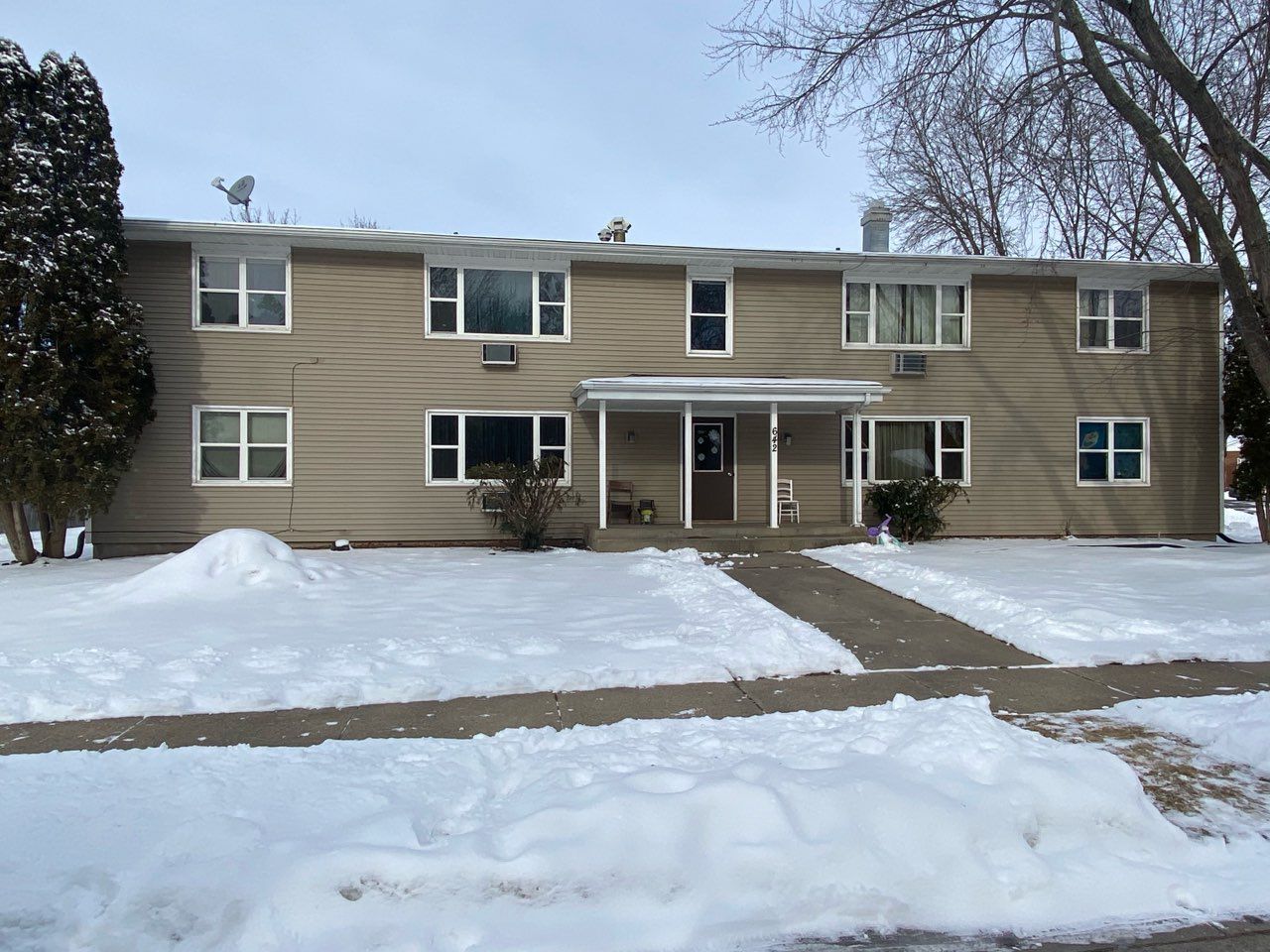
“Max decided we just needed one universal key on all the apartments in case we needed something,’’ said Mark. “Paul (Hornung) would be there now and then; Max had remodeled his one bedroom and the other side was a big party room and living area and Paul would reside on the big sofa some nights.
“We had a lot of interesting folks that would visit. After The Left Guard closed, then we’d go to Pizza Hut, have some pizza and several more of us would head to the apartment house and then we’d start all over the next day.”
Bob Dries joined in on a few of those late-night excursions.
“I partied a few times with Max. He had quite the bachelor pad there in Neenah,’’ said Bob. “He had a good stereo system, a lot of good tunes. He was a good host. He was always interested in making everybody comfortable and was having a good time. And there were always some women around.”
The apartment complex was where McGee lived his final two years of his playing career, which both resulted in Super Bowl championships. The only drawback for McGee was the distance he had to travel to work.
You know, a highway speed limit of 50 mph, some late nights, Lombardi time; it all added up to a substantial lead foot and the state troopers got to know Max rather well, according to Mark.
“I would say, not knowing for sure, probably 92.4 percent of the speeding tickets were never issued,’’ he said. “They would know his car. It was very identifiable. It was a red Cadillac Eldorado; they weren’t too many of those around Northern Wisconsin.”
****
This truly was a bygone era. Professional football players, immensely successful and popular, mixing right in with the everyday fans that worshiped and supported them. Some became lifelong friends, some became business partners and some became both.
“I have a lot of respect for every single one of them,’’ said Bob. “I can’t think of a single one of them that wasn’t good to the bartenders, or the customers.”
As for Mark, he lived the definition of a charmed bachelor’s life.
His connections would allow him to sit in the Lambeau Field radio press box and keep statistics for McGee and Jim Irwin, the Packers Radio Network broadcast team, or sit with Hornung as he did his radio show during football games at Notre Dame, his alma mater. He was able to attend numerous Super Bowls and even get prime seats to Las Vegas shows where one time he and his mother got to meet and chat with Frank Sinatra and Joe Louis, all in one night.
“I always say I was very blessed to meet all the people I met over the years, the celebrities, and non-celebrities,” he said.
“We never really took any photos; nothing. I just have the memories.’’
So many memories.



